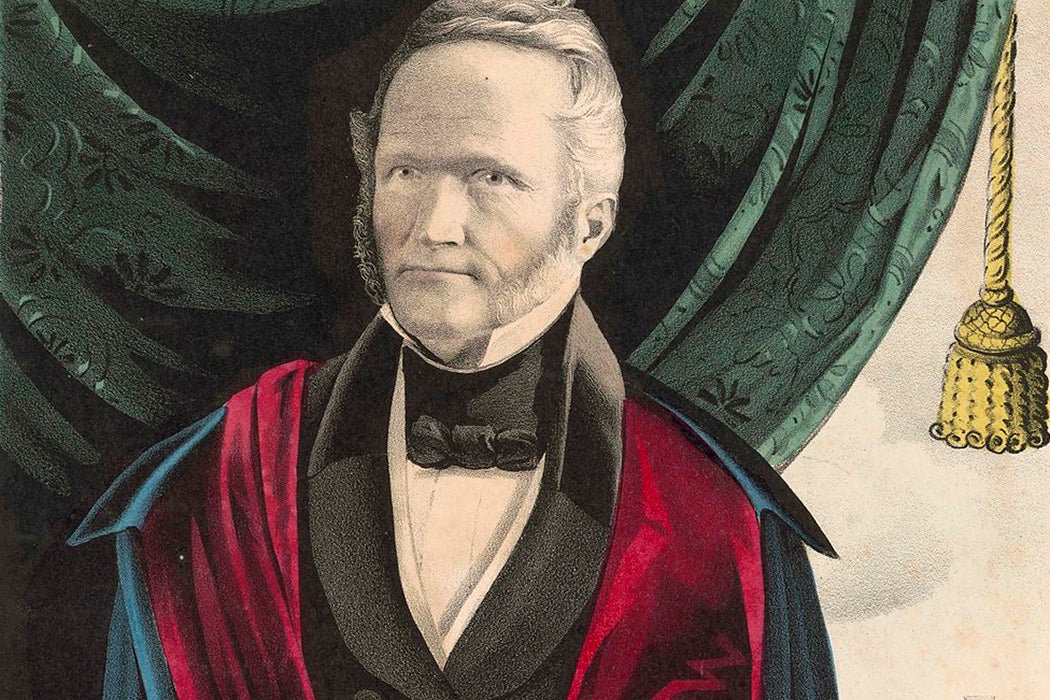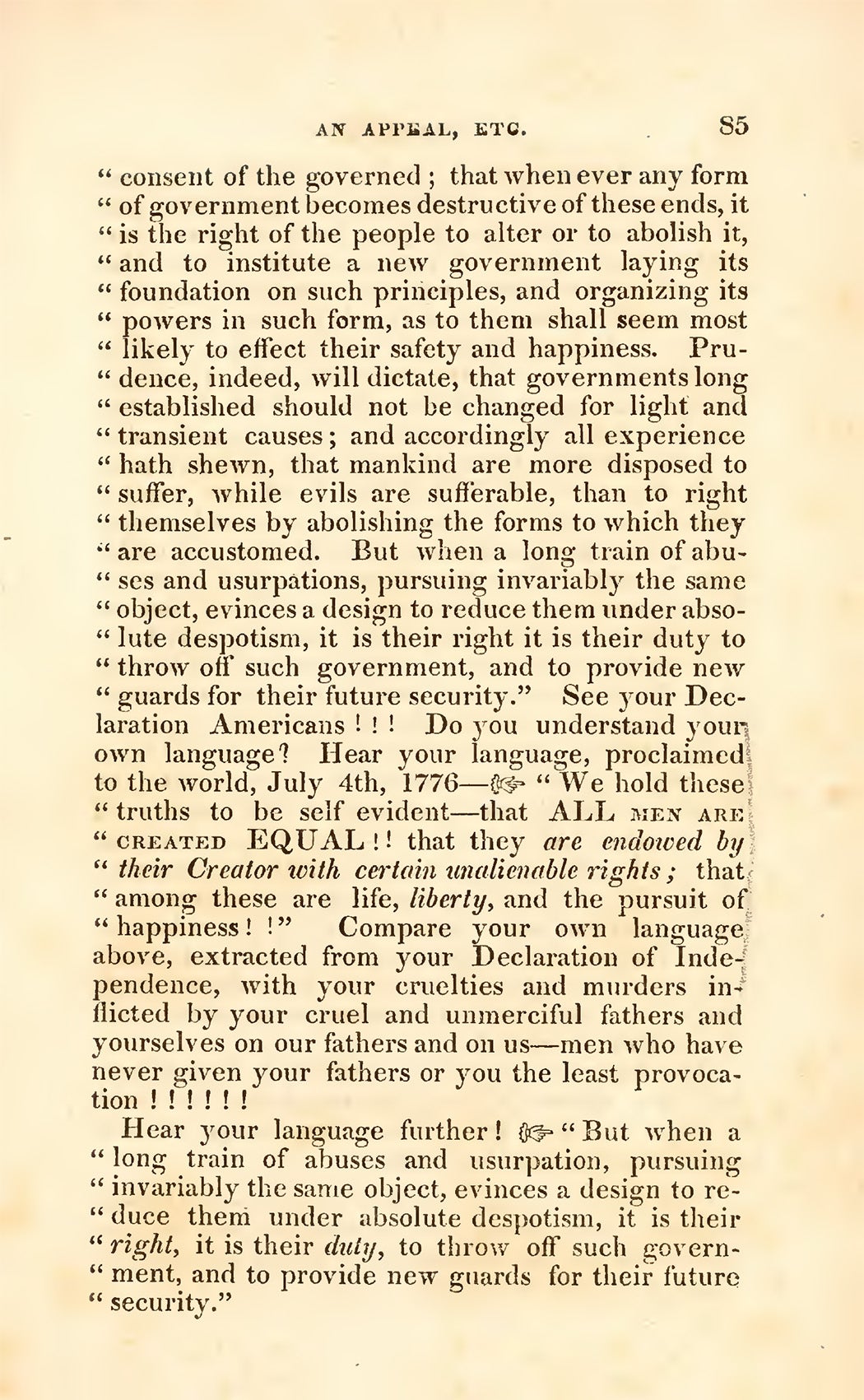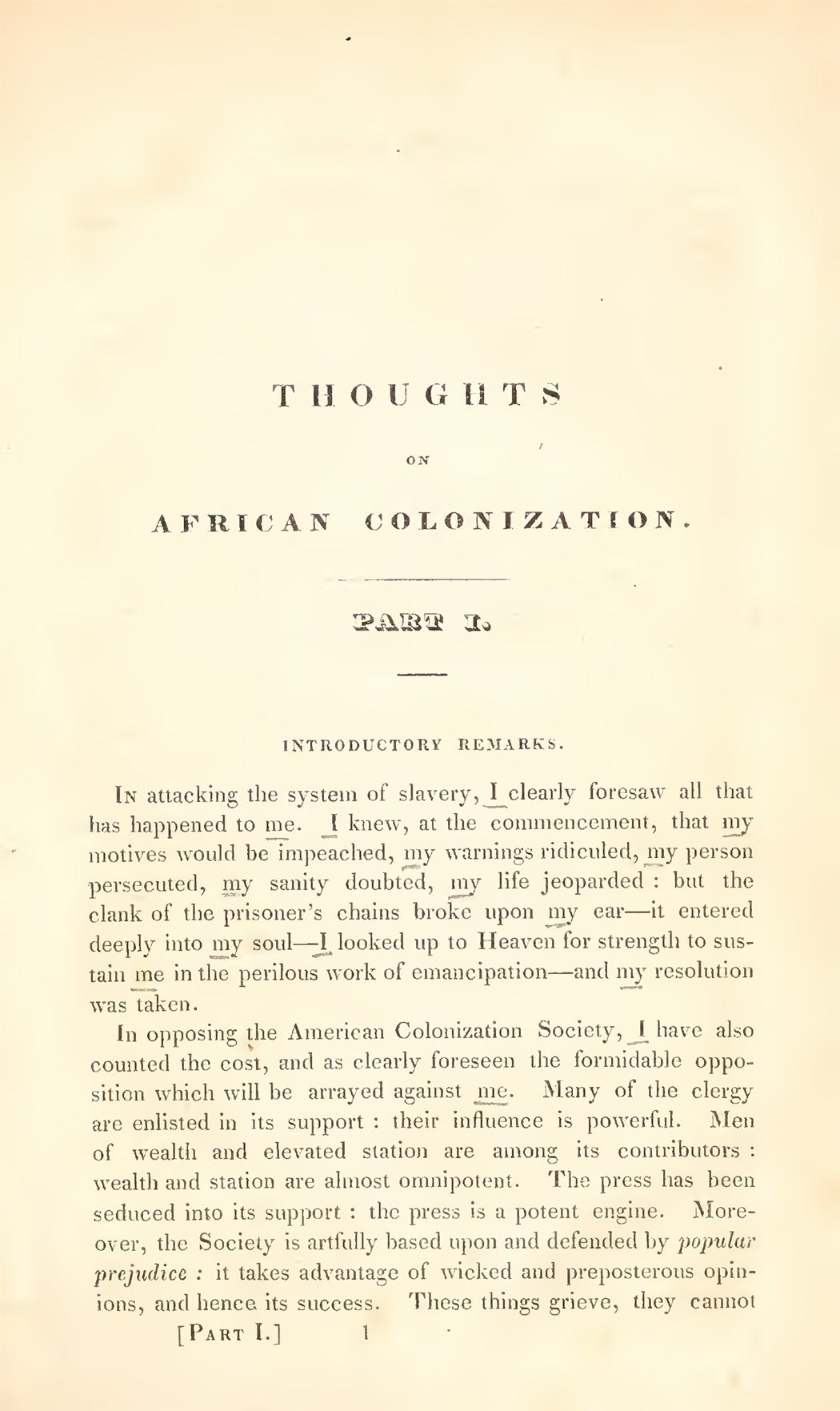The James Birney Collection of Anti-Slavery Pamphlets is a trove of print on slavery, colonization, race, and politics in the late eighteenth- and nineteenth-century United States. Concentrating on a set of pamphlets from the 1830s within the collection makes visible the central role that Black activism played in the intellectual, moral, and political evolution of Birney, a pivotal figure in the US anti-slavery movement. In our time of stubborn political polarization, Birney’s commitment to evolving his understanding and positions, and especially to learning from those most affected by the most vexing political issues of the day, is worthy of our attention.
Unlike most of the anti-slavery movement’s white leaders, Birney was a southerner and an enslaver when he joined the cause. To navigate this conflicted position and complicated questions of emancipation and colonization, Birney turned to study. He “read almost every work [he] could lay his hands on” in the winter of 1833 and spring of 1834 and was transformed by what he read. In June 1834, he manumitted the people he owned and renounced the colonization movement in which he had been active. In 1835, under increasing threats to his and his family’s safety for his actions, he moved to Cincinnati and began publishing the anti-slavery newspaper The Philanthropist. In the same year, he was appointed a vice president of the American Anti-Slavery Society. By 1840 (and again in 1844), Birney was the Liberty Party’s nominee for President, advancing the political wing of the national anti-slavery movement against the Garrisonians’ commitment to abolition through moral appeals to enslavers. Throughout his activism, he kept reading as much as he could about rapidly evolving debates that were conducted largely in print.
The Birney Collection has been expanded since Birney’s lifetime, first by his son William to prepare a biography of his father and subsequently by librarians at Johns Hopkins University, to which William donated the collection in 1890. The Sheridan Libraries’ finding aid for the collection doesn’t indicate which items were original to the collection, but based on pencil markings in and the topics of specific pamphlets, I think we can identify some of the publications that played a key role in James Birney’s changing mind and actions in the 1830s—a critical decade in both his life and the history of US anti-slavery and -racism.
In the collection’s copy of the third edition of David Walker’s Appeal to the Coloured Citizens of the World, pencil marks in the pamphlet’s margins suggest Birney’s especially engaged reading. (From surveying patterns of pencil marks in items across the collection and correlating these items with known dates in Birney’s political evolution, I take these annotations to have been Birney’s.) Walker’s pamphlet—self-published in three editions in Boston in 1829 and 1830—took the South by storm. It features his thoroughly researched and impassioned argument that US racial slavery was the worst form of slavery ever practiced anywhere in the history of the world and should be justly resisted by the enslaved by all available means. The “incendiary pamphlet,” as it became known in the press, occasioned some of the south’s strictest laws restricting Black literacy and mobility and censoring slavery related print. Walker was born free in North Carolina and eventually settled in Boston after extensive travels throughout the country to study the slavery situation. He mailed copies of his Appeal to known and likely sympathizers in the south. When Birney acquired his copy of the third edition, or if he received it as part of Walker’s campaign, is unknown. It certainly would have been very dangerous, if not illegal, for him to have possessed it in the southern states in which he lived before moving north in 1835. In the margins, Birney used a pencil to highlight some of the Appeal’s most controversial passages—including Walker’s justification of the use of lethal force by the enslaved—as well as passages in which Walker promotes Black education as essential to ending slavery and elevating the race.
Walker dedicates the fourth and final article of his Appeal to the subject of colonization and here again, we can see Birney reading closely with pencil in hand. In considering the manumission of the people he owned, Birney had become interested and active in these efforts to send freed Black Americans to Africa. In 1832, he was appointed a paid permanent agent of the American Colonization Society (ACS) to promote the cause in five southern states. The Birney Collection contains numerous periodicals and other print related to the colonization movement, including the African Repository and The Colonizationist and Journal of Freedom. Walker’s persuasive argument in his Appeal against the “colonizing trick” likely influenced Birney to very publicly renounce colonization in 1834.
On July 15, Birney wrote a long letter to the secretary of the Kentucky Colonization Society to resign as its vice president; the letter was published as Letter on Colonization, addressed to the Rev. Thornton J. Mills in a pamphlet by the AASS shortly after. At its conclusion, he notes that the views contained in it “are my own, and they have been the result of my own reading, observation and thought.” Significantly, he states his primary reason for resigning and renouncing colonization is the lack of consent by the very people to be colonized. By reading Walker’s Appeal and other Black anti-colonization arguments, Birney came to understand that compelled colonization was not in the interest of free Black people and that free consent was necessarily impossible under the circumstances of slavery and racism. In his letter he decries colonization as “the refinement of inhumanity, a mockery of all mercy, it is cruel, unmanly, and meriting the just indignation of every American, and the noble nation that bears his name.”
At the conclusion of Walker’s anti-colonization argument, he points Americans to the Declaration of Independence’s key statement about equality and rights—“See your Declaration Americans!!! Do you understand your own language?”—before inserting it with emphatic typographical emphasis: “We hold these truths to be self evident—that ALL men are created EQUAL!! That they are endowed by their Creator with certain unalienable rights; that among these are life, liberty, and the pursuit of happiness!!”
In Birney’s copy, a pencil mark in the margin next to this passage suggests its importance to him recognizing in his 1834 letter—using very Walker-like reasoning and language—that there could be no free consent to relocate to Africa as long as US law left Black American men’s “property, his person, his wife, his children, and all that God has by his very constitution made dear to him, unprotected from the outrage and insult of every unfeeling tyrant.”
In concluding the letter on colonization, Birney declared that he was “a member of no anti-slavery society—nor have I any acquaintance, either personally or by literary correspondence, with any of the northern abolitionists.” Less than a year later, he was appointed as one of the AASS’s vice presidents. A particularly interesting set of pamphlets published in 1834 likely informed Birney’s rapid and radical evolution to play a leading role in the AASS. Importantly, two of the pamphlets confirm strong Black support for the fledgling AASS, founded in 1833.
In early May 1834, the AASS published its first annual report as a pamphlet as part of the Society’s commitment to advancing the cause through print. As its founding Declaration of Sentiments (1833) had announced, “We shall circulate, unsparingly and extensively, anti-slavery tracts and periodicals,” and “We shall enlist the pulpit and the press in the cause of the suffering and the dumb.” Opponents’ strong reactions to this strategy of flooding the nation with anti-slavery print ranged from publishing proslavery pamphlets to seizing and burning mailbags and crates of AASS pamphlets being mailed south in a series of raids on post offices in 1835.
In August 1834, David M. Reese, one such opponent, started a pamphlet flame war with his Brief Review of the AASS Report. Reese, a medical doctor, presents his commentary as an “adequate antidote” to the “poison” being distributed by the AASS in its Report and himself as an “uncompromising enemy of slavery” and “friend of universal emancipation in this and every land.” With his professional and political bona fides thus established, Reese emphasizes the dangers of “‘immediate abolition,’ and the project of a forced and unnatural elevation of the African race.” Among these dangers, he salaciously insists that “it cannot be denied, that the doctrine of ‘amalgamation of the races,’ so frequently disclaimed, is manifestly broached” in the Report. Reese was also particularly incensed by AASS members’ condemnations of the American Colonization Society and the colonization movement and dedicates significant attention in the pamphlet to defending both. He ultimately diagnoses the AASS as “both Anti-American and Anti-Christian in its nature and tendency;—that it is wild, visionary, and Utopian, in proposing to elevate to equality with the whites, a race so long oppressed, degraded, and down-trodden in the dust” and its “schemes and plans” as “treasonable in their character, involving the overthrow of our civil institutions, and the dissolution of our national compact.”
David Ruggles, a leading anti-slavery and Black mutual aid and self-defense activist based in New York City, couldn’t resist responding to Reese in two pamphlets. The first appeared in Boston in August 1834 under the pseudonym Martin Mar Quack, followed by the faux credentials “M. D. L. L. D. M. Q. L. H. S. O. S. M. F. M. P. S. &c. &c.” ridiculing Reese’s political misuse of his medical degree. In Ruggles’s pointed “dissection” of Reese and his pamphlet, he finds that “a more malignant tissue of calumny has never been issued from the American press” and deems that Reese’s Review, “like all his other writings, would be totally unworthy of notice, did not the sanction given to it by persons, who claim respect, add to it an imposing character which conceals its innate turpitude.” “Mar Quack” also charges the New York doctor with quackery: “This farrago of untruth and spite combines all the insolence, recklessness, and knavery of a Charlatan, who, provided that he can pocket his money for his murderous nostrums, laughs at the credulity of those whom he gulls with is death-dealing imposture.” Ruggles’s reasoned outrage is evident on all twenty-two pages of his text. He underwrites his scathing satire with rigorous close reading and argumentation.
Even so, Ruggles evidently was concerned that he hadn’t finished Reese off with the Mar Quack pamphlet, so he subsequently published The “Extinguisher” Extinguished! Or David M. Reese, M. D. “Used Up” under his own name and in New York. It announces, “if the Doctor cringes at anything […] David Ruggles is on the spot” with Reese in New York, “ready for an explanation and able to give satisfaction.” Ruggles’s credentials for taking down Reese this time are understated: “the advantages of a New England Free School education,” having “read a little, and thought a little, and felt a little,” and “understand[ing] something about the subject of Slavery and Colonization.” His motives are selfless in contrast to Reese’s; Ruggles seeks solely “to promote the welfare of [his] brethren in bonds” by advocating “the cause of immediate and universal emancipation” as “the cause of truth, and of God,” which he substantiates his exhaustive refutation of Reese’s claims.
While the Ruggles (and Reese) pamphlets don’t bear the same extensive marks of engagement as Birney’s copy of Walker’s Appeal, that they’re in the Birney Collection suggests the extent of his engagement with Black activists’ arguments against colonization and in support of the AASS, as well as his recognition of important differences between Black and white activists making these arguments. In Birney’s copy of William Lloyd Garrison’s pamphlet Thoughts on Colonization (1832), he has underscored each instance of Garrison’s use of the first person in the first four pages of Garrison’s introductory remarks.
I read these annotations as Birney noting how Garrison prioritized himself and his views over those of the people most affected. Garrison’s pamphlet’s structure confirms what Birney has noticed, with Part II dedicated to the “Sentiments of People of Color,” a compendium of Black American written protests against colonization preceded not only by Garrison’s views in Part I, but also his lengthy introduction to the Black-authored texts in Part II.
Weekly Newsletter
It’s tempting to read Birney’s marks in Thoughts on Colonization as early signs of his further evolution from the Garrison-led AASS to the breakaway American and Foreign Anti-Slavery Society and from abolition by way of moral appeal to national politics. This opposition was given new life with Garrison’s and Birney’s sons’ rival publications of their fathers’ biographies at the end of the century, as histories of anti-slavery and the Civil War were being rewritten. With historian Manisha Sinha, I think it’s right to shift our view from these prominent white abolitionists to recognize Black abolitionists and their resolute unity with the enslaved as the bedrock of all anti-slavery and anti-racist activism in the US.
In this small sampling of pamphlets from the 1830s from the James Birney Collection, we see just how formative Black anti-slavery and anti-racist activists’ writings were to Birney’s personal and political evolution. The anti-slavery movement would not have gained an important former southerner and enslaver as one of its most prominent leaders if Birney had not carefully studied Black activists’ passionate and convincing pamphlets, taken their principles to heart, and acted on them at the national level. Digital access to these activists and their pamphlets and the wider range of publications on slavery, colonization, politics, and Black education in the James Birney Collection allows us to continue developing nuanced understandings not just our histories of anti-slavery and anti-racist activism, but also our own moral and political positions and activism on these issues that continue to vex and divide the US.
Johns Hopkins Collections on JSTOR










